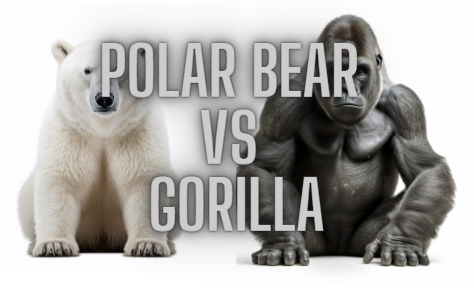Polar bears and gorillas are two magnificent creatures that inhabit vastly different environments. While polar bears dominate the Arctic regions, gorillas rule the dense forests of Africa. In this article, we will compare and contrast these iconic animals in terms of their physical characteristics, behavioral traits, ecological roles, and conservation status.
Physical Characteristics
Polar bears are impressive predators, equipped with a thick layer of insulating blubber, a streamlined body, and large, powerful limbs. Their white fur provides excellent camouflage in the Arctic landscape. On the other hand, gorillas possess immense strength and are characterized by their muscular builds, with males often exhibiting pronounced silverbacks and impressive canines.
Habitat and Adaptations
Polar bears are superbly adapted to their icy environment. Their fur and blubber protect them from the extreme cold, while their partially webbed paws enable efficient swimming. Gorillas, on the other hand, are perfectly suited to the forest habitat. They possess long arms for climbing and knuckle-walking, powerful jaws for consuming vegetation, and a social structure that revolves around family units led by a dominant silverback.
Behavioral Traits
Polar bears are solitary animals, with the exception of maternal associations and temporary interactions during mating season. They are skilled swimmers and proficient hunters, relying on their patience and powerful swimming abilities to catch seals. Gorillas, on the other hand, are highly social animals that live in cohesive groups known as troops. They exhibit complex communication, including a wide range of vocalizations, body language, and gestures.
Ecological Roles
Polar bears play a crucial role in the Arctic ecosystem as apex predators. They help regulate the population of their primary prey, seals, and their presence has cascading effects on the entire food web. Gorillas, as herbivores, are important seed dispersers and contribute to the regeneration of forests. Their feeding habits shape the vegetation composition in their habitats and create openings for other plant and animal species.
Conservation Status and Threats
Both polar bears and gorillas face significant conservation challenges. Polar bears are listed as a vulnerable species due to the loss of sea ice habitat caused by climate change. The reduction of sea ice affects their hunting success and overall survival. Gorillas, on the other hand, are classified as critically endangered due to habitat loss, poaching, and disease transmission. Efforts are being made to protect their habitats and combat these threats to ensure their long-term survival.
Who Is Stronger?
Comparing the strength of polar bears and gorillas is challenging due to their different physical characteristics and adaptations for survival in their respective environments. Strength can be measured in various ways, including physical power, agility, and endurance.
Polar bears are known for their immense physical power. Adult males can weigh up to 1,500 pounds (680 kilograms) and stand over 10 feet (3 meters) tall when on their hind legs. They possess powerful muscles and are capable of delivering strong blows with their forelimbs. Polar bears are also excellent swimmers and can cover long distances in the water.
Gorillas, on the other hand, are renowned for their incredible strength relative to their body size. Adult male gorillas, known as silverbacks, can weigh up to 400 pounds (180 kilograms) and have exceptional upper body strength. They use their powerful arms for climbing trees, knuckle-walking on the ground, and engaging in displays of dominance. Gorillas can exhibit remarkable feats of strength, such as bending and breaking vegetation, as well as engaging in physical confrontations with other gorillas.
Who Is Faster?
In terms of speed, polar bears and gorillas have different capabilities due to their adaptations and habitats.
Polar bears are known for their impressive swimming abilities rather than their running speed. They are well-adapted for swimming long distances in the Arctic waters, using their large front paws as paddles. While polar bears can reach speeds of up to 6 mph (9.7 km/h) in the water, they are not particularly fast runners on land. On land, their large size and weight make them more adept at walking or trotting rather than sprinting.
Gorillas, on the other hand, are terrestrial animals and are more agile on land. While they are not known for their exceptional speed, they can reach speeds of up to 20 mph (32 km/h) in short bursts. Gorillas primarily employ their speed during displays of dominance, territorial defense, or when moving quickly through their forested habitats.
Final Thoughts
Polar bears and gorillas are awe-inspiring creatures that have evolved to thrive in their respective habitats. While polar bears excel as solitary Arctic hunters, gorillas exhibit complex social behaviors in the dense forests of Africa. Despite their differences, both species face conservation challenges, highlighting the need for ongoing efforts to protect their habitats and ensure their survival for future generations to appreciate and admire.

